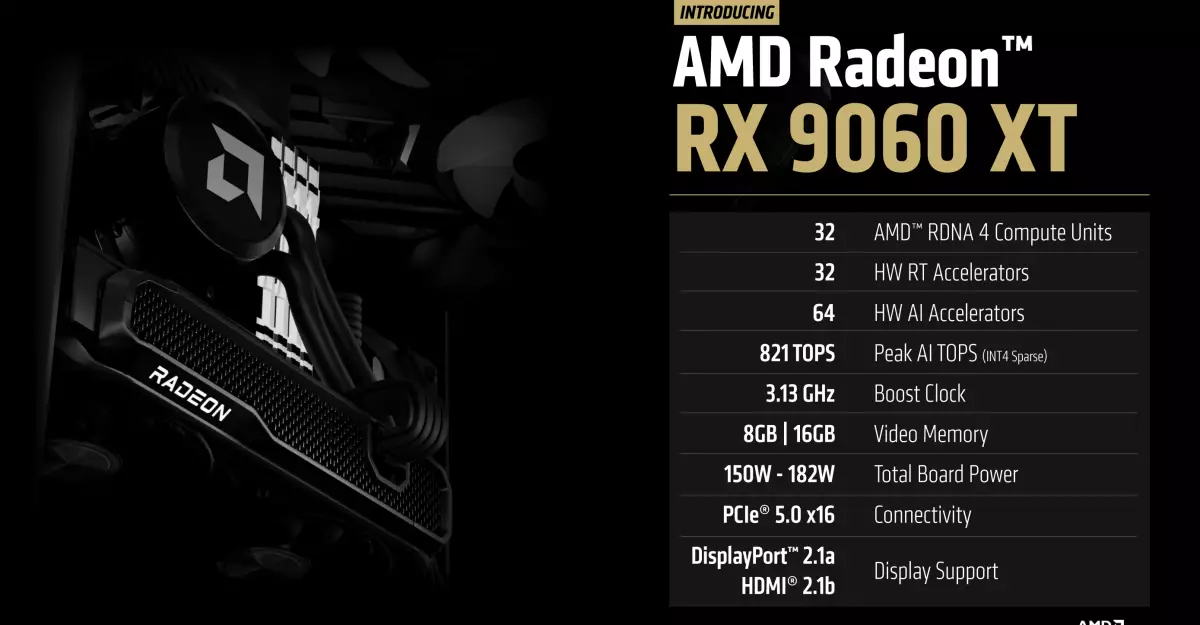AMD is making waves in the graphics market once again with the introduction of their Radeon RX 9060 XT at Computex. This announcement not only signals AMD’s commitment to remain competitive with Nvidia’s recently launched RTX 5060 but also raises eyebrows due to the lack of a price point or release date. In a landscape where expectations are high, AMD’s decision to withhold such critical information sparks curiosity and concern, especially for enthusiasts eager to integrate the latest technology into their systems.
The VRAM Controversy
One of the most debated topics surrounding modern GPUs is the amount of Video RAM (VRAM) they contain. AMD’s RX 9060 XT models offer either 8GB or 16GB of VRAM, a strategic choice that mirrors Nvidia’s controversially low 8GB offering for the RTX 5060. As gaming graphics become increasingly demanding, enthusiasm is often tempered by dissatisfaction toward restricted memory capacity. While some argue that 8GB may suffice for current titles, the advancement of AAA games necessitating larger VRAM pools casts a shadow of doubt over the long-term viability of both cards. Would AMD have been better off redefining the VRAM standard rather than following Nvidia’s path?
Technical Specifications
The RX 9060 XT boasts impressive specifications, including 32 RDNA 4 compute units and a peak boost clock of 3.13GHz. Additionally, it supports advanced connectivity options such as DisplayPort 2.1a and HDMI 2.1b, setting it up for future-proof performance. The board power ranges from 150 watts to 182 watts, showcasing AMD’s engineering prowess in optimizing power consumption without compromising performance. However, specifications alone do not guarantee consumer confidence; the hype surrounding the performance benchmarks will play a crucial role in how this GPU is perceived upon release.
Comparative Market Dynamics
With the launch of the RX 9060 XT overlapping with Nvidia’s RTX 5060, the competitive dynamics of the GPU market are shifting. Nvidia’s strategy of limiting reviewer access prior to launch has raised eyebrows and could lead to potential backlash if the GPU fails to impress. This secrecy contrasts sharply with AMD’s open approach, thereby positioning itself as a transparent competitor in a tumultuous market. As consumers weigh their options, the shadow of this comparison looms large, placing pressure on both companies to deliver products that live up to the hype.
The Role of Content Creators and Community Sentiment
The gaming community’s response to company decisions plays a pivotal role in shaping perceptions. Recent controversies surrounding Nvidia’s alleged attempts to manipulate benchmarks have not boded well. Gamers Nexus, a prominent YouTube channel, has shed light on these unsettling practices, prompting the community to be more vigilant and discerning in their purchasing decisions. AMD would be wise to leverage this atmosphere of skepticism towards its rival by promoting transparency and engaging with users directly, thus establishing a more relatable and trustworthy brand image.
In navigating this complex landscape of GPU launches, pricing strategies, technological specifications, and consumer sentiment, AMD has the opportunity to differentiate itself and define its legacy in the ever-evolving tech landscape.

